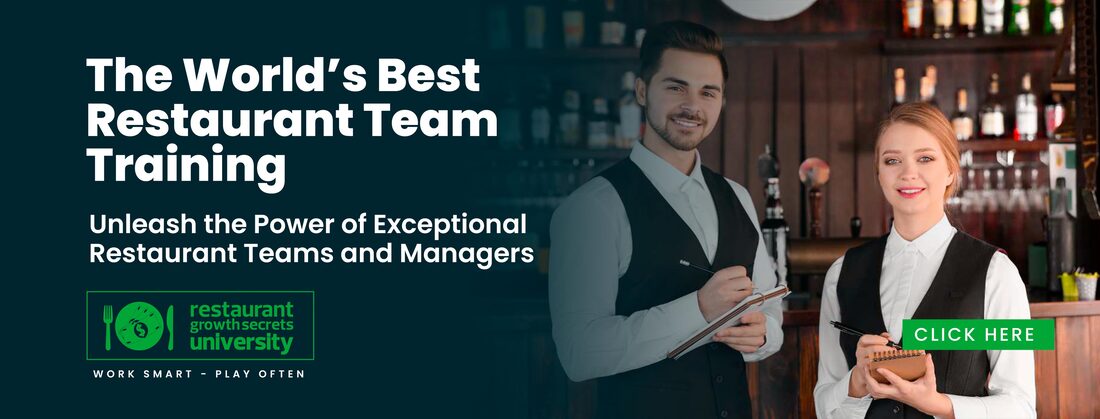|
Here are three must-see quotes from the fast-casual chain's second-quarter earnings call. Daniel Sparks Chipotle Mexican Grill (NYSE:CMG) has impressed investors in 2019, building on the momentum it saw last year. The company has notably achieved six consecutive quarters of accelerating comparable sales, with second-quarter comps coming in at 10%. Helping drive the fast-casual chain's results are revitalized efforts in marketing, restaurant efficiency, and digital. To better understand what's behind the company's strong performance and its opportunities ahead, investors can turn to management's second-quarter earnings call. Though the call included lots of insightful information, three topics discussed during the call that are worth a closer look are Chipotle's rewards program, its digital sales, and management's teaser of potential new menu items. Here are three key quotes from management on these topics. Digital sales are soaring Since Brian Niccol took the reins early last year as Chipotle's new CEO, the company has been relentlessly capitalizing on digital opportunities. Chipotle's efforts in digital have been broad-based, including streamlining online ordering, delivery, and catering, as well as improving the mobile app and launching a rewards program. These efforts are helping digital sales climb sharply. "Our customers are responding positively to our digital system, ... as it reduces friction and creates a convenient and enjoyable way for our guests to experience Chipotle," explained Niccol in Chipotle's second-quarter earnings call. "Overall, digital sales grew 99% year over year to $262 million during the quarter and represented 18.2% of sales." Chipotle's rewards program is paying off One aspect of Chipotle's digital efforts worth calling out is its recently launched rewards program. Debuted in March, the program has already garnered five million members, Niccol said. In addition, the program is quickly morphing into a catalyst for Chipotle's business. "Early results are showing that members are increasing their frequency after joining the program," said Niccol. "The rewards program gives us a currency that we can use to incent behaviors and is a key enabler of our digital ecosystem moving forward." Chipotle teases new menu items
Another way Chipotle is trying to improve its business is by innovating with menu items. To this end, the company announced "Lifestyle Bowls" in January. These bowls cater to different popular diets such as paleo and keto diets. The new menu items have been popular with customers. Chipotle has also been testing quesadillas, which are cooked in new ovens. This pilot has received positive feedback from customers. Of course, Chipotle doesn't plan on stopping here. It wants to keep innovating with menu items. "The new ovens are helping to improve the quality and taste of the quesadillas and could potentially be a platform for other new menu items including desserts and nachos," said Niccol. But investors shouldn't expect many meaningful changes to Chipotle's menu in the near term. The company wants to ensure it isn't sacrificing throughput for the sake of new items. "[W]e still have some work to do in order to streamline our workflow," Niccol added. Quick: What was the last problem dropped on you yesterday, and what looming catastrophe kicked off today?
Restaurateurs often complain their days are spent lurching from one potential crisis to another, leaving little time to observe and digest what’s happening in the industry as a whole. Trends unfolding outside their four walls often go unnoticed until the resulting problem or opportunity has pushed its way inside. We got your back, bunky. Here are three of those sleeper currents that merit a moment of consideration, even if the sink is clogged, the dishwasher didn’t show and a tour bus just pulled up outside. Dinner is the challenge of the moment Restaurants, or at least those of the chain variety, are continuing to see too few dining room seats being filled. But at least they’ve diagnosed the problem more precisely. Particularly for casual-dining operations, which have spent years trying to scrounge up any lunch business, the new challenge is drawing dine-in customers for dinner. While same-store traffic for chain restaurants was down 2.8% overall from January through July, transactions fell on a comparable basis by 3.6% at dinner, according to Black Box Intelligence. Applebee’s blamed its second quarter slide in same-store sales squarely on a drop-off at night. The issue, it said, was turning off bargain hunters, who make up about 20% of the casual giant’s customer base. “I believe our May-June performance could have been stronger had we introduced our new Loaded Fajitas with a compelling nationally advertised price point,” said President John Cywinski, referring to the $10.99 platter that was offered late in the quarter. “Bottom line, when we're aggressive on price, value seekers tend to be with us, and when we're not, they tend to seek a deal elsewhere.” Applebee’s is now touting the first in a new line of hand-formed burgers, priced at $7.99 and served with unlimited fries. Other casual chains are similarly touting new bargains. Chili’s Grill & Bar crowed about getting away from discounting, but it’s currently spotlighting the offer of a soft drink, appetizer and entree for $10 total, and plans to keep touting the bargain for some time to come. Casual chains aren’t the only operations searching for ways to pull more guests in the evenings. The Freshii fast-casual brand is testing the dinnertime staples of roasted chicken breasts, turkey meatballs and vegetarian protein entrees at 30 stores, while simultaneously commencing a sales trial of plated meals. Gee, that new menu item sounds familiar … Grandpa used to say, “Everything old will be new again.” But he was old, cranky and going senile, so no one paid attention. Except, it seems, the menu planners rolling out promotional items for the second half of summer ’19. Turns out the novelty sought with grabbers such as faux meats and hard seltzers has given way to a reliance on nostalgia. Look at the menu draws being touted this month and you’ll see a bunch of geezers packaged up to sound new and desirable again. Wendy’s is pushing spicy chicken nuggets again. Chick-fil-A said it was prompted by customer demand to resurrect its Smokehouse BBQ Bacon Sandwich and Strawberry Passion Tea Lemonade, while simultaneously introducing an actual new product, mac and cheese. Hardee’s brought back its kids meals, White Castle is pushing Chicken Rings again and Buffalo Wild Wings has resumed offering two-for-one wings on Tuesday nights. And we’re just getting into the pumpkin spice coffee season. Merchandise sales are back, and apparently XL It’s apparently cool again to wear garb sporting the logos of restaurant chains, or at least the right restaurant chains. Why else would it be mainstream news that Taco Bell has revealed its new back-to-school clothing line? Now available in the Taco Shop, the quick-service chain’s online merchandise mart, are a branded hoodie, T-shirt and backpack. The line has been extended to include a flash drive that looks like a packet of hot sauce; memo pads; and pencils patterned after the sauce packets. The Yum Brands holding isn’t the only restaurant chain that has found logoed merchandise to be a source of new revenues. A new array of “beer gear”—clothing for suds aficionados—proved a pleasant surprise for Granite City Food & Brewery. Meanwhile, any gathering of Los Angelenos shows how the love of In-N-Out translates into sales of the cult favorite's T-shirts. Clothing studded with the chain's logo is almost as prevalent as duds celebrating the Dodgers. Some business owners find that they cannot juggle all of the necessary tasks without working around the clock. One way to reduce the burden is by outsourcing work to remote employees. Indeed, many businesses have found that outsourcing not only saves time but can also drive profits. Here are five ways that outsourcing can increase your company’s bottom line: 1. Lower Costs
Outsourcing can help you cut costs dramatically, especially because you do not have to hire full-time staff to perform business tasks. Outsourcing to a smaller company or individuals allows you to save on benefits and taxes that you would otherwise have to pay if you have full-time employees. Further, you can negotiate for great rates when you outsource work, which helps you cut costs and improve your company’s bottom line. In Hong Kong, I have seen a trend in outsourcing software to Eastern Europe; this trend has been growing here for two reasons, (1) the cost to hire local software developers is extreme – small businesses are competing for talent against some of the world’s most deep pocketed financial firms – and, (2) talent, there is a lack of local talent that can get the job done at adequate quality in Hong Kong. 2. Increased Productivity Outsourcing administrative and other non-productive tasks can free up time up and owners to concentrate on more productive activities such as marketing, developing strategy, networking, and coming up with new products and business ideas. Increased productivity means greater sales, more revenue, and ultimately improves a company’s bottom line. At my company Visichain, for example, I utilize remote workers for many ongoing tasks, including: Bookkeeping, to India Graphic Design, to Romania Website Design, to Philippines And, other one-off tasks to the best people where ever I can find them. Recommended for You Webcast, September 17th: 10X Growth & Relationships with Community Building 3. Better Customer Service Outsourcing the customer service function can result in happier customers who choose your company’s products and services time and again. Also, happy customers are more likely to recommend your business to friends and family, which leads to more sales, greater revenue, and higher profits. Another plus when outsourcing customer service for global operations is it allows for 24/7 support because you can utilize back office services that work around the clock. This can be a major service advantage especially for online businesses and companies that are competing against commodified services that don’t yet make the convenience of 24/7 availability an option. 4. Greater Investment Outsourcing allows you to redirect money you would have used to pay full-time staff into other productive activities such as purchasing more stock or investing in machinery and other assets that grow your business. And, as Chris Pentago has noted in another article here on Business 2 Community, Strategic Outsourcing Can Lift the ROI of a Small Business. 5. Increased Revenues Outsourcing business processes allows you and your existing staff to concentrate on activities that bring in customers and drive revenues up. Increased revenues have a direct impact on your company’s bottom line and allow you to drive up your profit margins. Since staff is free from having to perform mundane tasks such as data entry or customer service, they can focus on meeting more clients, making more cold calls, networking, and other activities that increase revenue. In Conclusion When done correctly, outsourcing can increase your bottom line. Your office staff are more productive due to the reduced workload and you can use the extra money to invest in your company. When you are considering outsourcing, take a look at the daily tasks and select ones that do not need to be done in the workplace. By Mitra Sorrells TripAdvisor is offering a Wi-Fi subscription service for restaurants to help them collect more reviews and build their email marketing databases.
Any of the site’s more than four million restaurants can now sign up for TripAdvisor Wi-Fi Plus, enabling them to offer free Wi-Fi to their diners through a branded network. To access the service, diners provide either their email or a social media credential. After leaving the restaurant, the system sends the guest a reminder to leave a review, and the restaurant can also maintain communication, for example to send individual messages or automated campaigns. When asked if TripAdvisor may extend this offering to additional categories, such as tour and activity suppliers, Evan Becker, head of key accounts for restaurants, says, “The agreement that we have set up with our vendor today, a company called Captini, is not exclusive to our restaurants product line. "There are certainly future opportunities for us to expand this to other business units, but at the moment we are currently just focused on restaurants.” Restaurants comprise about half of TripAdvisor’s listings, which also cover accommodations, airlines, experiences and cruises. In the United States, pricing for TripAdvisor Wi-Fi Plus ranges from $69 per month with a two-year plan to $89 per month on a month-to-month basis. Pricing varies in other countries. By Paul Davidescu , Adam Grushcow, Santiago Orozco Restaurant bot marketing has started to hit the mainstream as this A.I technology empowers restaurateurs to meet two key needs from today’s consumer: speed and exclusivity. By being able to use the power of Facebook Messenger Bot marketing, you can send the same messages you would in your newsletter but with open rates between 80-90 percent. With bot marketing you can automate many conversations that you would otherwise require a dedicated staff member responding to. You can also inform people about just about any questions they have instantaneously before they try your neighbour. Finally, you can leverage the features of a bot to drive direct sales when using an exclusive offer with a bot campaign. Speed is the Name of the Game A 2017 global mobile survey revealed that organizations take around 600 minutes to respond back to customers FAQ over Facebook Messenger. By this time, they have already tried 600 other options.
Exclusive Deals: Driving $35,000 Revenue in Revenue Eighty percent of diners are likely to try a new restaurant if there’s an exclusive deal. Many deals fail because they aren’t distributed properly, not reinforced often enough and finally, many aren’t compelling enough for customers to act on. Bot marketing gave Rapid Fire Pizzeria the ability to have patrons instantly win a free appetizer by entering into their contest and tagging their friends. These results are from a client of Matt Plapp and his ROI Engine program. Key Results at a Glance
Today, more than 100,000 bots are being used on Facebook Messenger to collect information, make product recommendations, take orders and even to advance social good. Bots give you a new way to build brand awareness, increase foot traffic, and spread information on events and specials.
Email open-rates used to be 90 percent before mass adoption kicked in and dropped it down to under 30 percent. Bot open rates are currently at what email used to be – how long do you want to wait By Geoff Short
Starting a restaurant has long been many peoples’ dream. However, the industry is under constant pressure from changing consumer demands and banks and lenders that are becoming more risk averse. It has always been a financial risk to open a restaurant, but the current landscape does offer hope for entrepreneurs. Specialty private equity shops are one way of raising funds to start a restaurant, as is utilizing personal contacts. Christa Jaganath, a senior audit manager at Briggs & Veselka Co in Houston, TX says there is also another emerging method of securing capital. “The benefit of crowdfunding is that you now have people like me and you who can essentially provide $100 or $1,000, almost like you’re fundraising. So, anybody in the community can contribute money,” Jaganath said. “It provides this community involvement where they now feel like they’re involved in your restaurant, which means they are now going to bring their friends, their family, to the restaurant. It’s good marketing, and they want to get their money back as well.” Jaganath recently spoke at the Texas Restaurant Association Marketplace about best financial practices in this ever-changing environment. As delivery becomes more prevalent and taste buds change, restauranteurs must be even smarter and more efficient than ever before. Every dollar counts in an industry known for slim margins. How restaurants approach items like delivery services and consumer demands will determine which ones have a successful future. by: Ken Newman, CEO of DMA | Digital Marketing Agency
Ken Newman, CEO of DMA (Digital Marketing Agency) reported that one of DMA’s marketing partners shared a story about a new fast casual restaurant in town that was having challenges establishing a foothold in a new market. Despite an opening plan that included traditional paid advertising and a host of social media efforts, this location was not achieving comparable results to the brand’s other locations. How did they resolve this issue? The restaurant’s marketing consultant identified the key Mommy Bloggers in the area, hosted them for an in-house tour (with children in tow), served them lunch, and started relationships that would ultimately turn the tide for their business. Soon they became known for their family friendly atmosphere, healthy food options in the fast casual space, and menu items that are pleasing both to adult and toddler palates. How did this happen? The Mommy Bloggers were suitably impressed, taking to the internet to reach their followers and to wield their influence. Newman explains that, like the example above, many businesses can rely on influencers to push their brand to loyal followers with very little financial investment. Unlike the example above where the influencers were local, you have the option to engage globally. He has advice on how to get started: Build relationships before you ask them to promote your brand. Like and share their posts, eventually begin commenting where appropriate. Once you are ready for the next step, suggest a mutually beneficial arrangement for them to mention you in their posts. A fashion company we have worked with provides key influencers with clothes from time to time. Have them push a specific offer only available through their channels. This will allow you to test how their influence is working. Rinse and repeat. Identifying and building an influencer base can be time consuming at first. But once you have built a list, you have the great opportunity to build new relationships, bringing new energy into the fold. What’s more, you will be creating brand ambassadors that have the potential to bring your business to a whole new level. About DMA (Digital Marketing Agency): DMA has offices worldwide. An experienced staff of 30 experts identifies and solves online marketing issues for businesses who want to effectively market their services online. The Naples office is located at 3510 Kraft Road. Have you ever wondered if there’s any way to harness Snapchat’s unique functionality to market your business to a younger demographic? This platform’s capabilities present an interesting option for marketers, but not a lot of clarity on how to use them effectively. If you’ve been chasing the Generation Z market, however, Snapchat has some tricks up its ghosty little sleeves that have been proving successful. In addition to its built-in advertising tools, the platform is also offering analytics solutions for power users. In this article, we’ll investigate Snapchat’s user statistics and data analysis options. We’ll also outline three ways you can start implementing Snapchat as a part of your business’ marketing strategy. If you’re ready, let’s pick a good filter and get started! Why You Should Consider Using Snapchat as a Marketing Tool Snapchat can be an enigmatic social media channel for users of certain generations. Its reach, however, holds plenty of promise for marketers. Snapchat users are extremely active, creating 3.5 billion snaps per day. When you combine that with the six different advertising formats and a lower cost of conversions compared to other social media platforms, there’s a lot of potential on offer. Additionally, when it comes to demographics, 71% of Generation Z uses Snapchat as a part of their daily routines. Plus, 51% of this group uses Snapchat roughly 11 times each day. Those are big numbers for younger demographics, a market that’s notoriously hard to capture. 3 Ways to Market Your Business With Snapchat There’s a lot more to Snapchat than the disappearing ‘snaps’ you can send. This camera-centric app has plenty of other features as well, such as games, quizzes, and interactions, which can contribute to a robust marketing strategy. 1. Use the My Story Feature to Create Experiences Outside of the basic ‘snap’ that disappears once it’s viewed, Snapchat also has a My Story feature. This is an excellent option for developing engaging customer experiences. Unlike snaps, stories remain viewable for 24 hours. Creative business owners can take advantage of Stories on Snapchat for free. Posting frequently (but not too frequently) is a fruitful way to boost customer engagement, according to a Snaplytics study. This data analysis firm also found that recommendations and Calls to Action (CTAs) can be much more effective on this platform than on Facebook or Instagram. Snapchat also offers paid advertising options, which can be worth your time as well. To illustrate the point, the company Wish invested in Story Ads and found an 80% lower Cost Per Install for its Wish App when it fed ads directly from its product catalog: However, there are some downsides to advertising with Snapchat to be aware of. For instance, Stories are not shareable, which is a big benchmark for other forms of social media marketing. With the My Story feature, you can create a collection of snaps that either tell a narrative or create an opportunity for customers to participate in a sale, download an app, or use a coupon for a specified amount of time. My Story also has some built-in features for seeing how many people have viewed your story or taken screenshots of it. 2. Create Dynamic Geofilters for In-Store Incentives One of the most dynamic and engaging ways to use Snapchat for marketing might be its on-demand geofilters. Geofilters are custom overlays you can create that Snapchat users can only access if they are in a certain geographic location. For instance, you might restrict a filter so it can only be used by those who are inside your physical store or place of business: There is an approval process for both personal and business geofilters. So you’ll want to plan ahead and give yourself a couple of days for approval time before you want to use the filter. For example, you could create a filter ahead of time for a store grand opening or a sales event. Plenty of businesses have used geofilters to great effect. Kentucky Fried Chicken is just one of many big brands (others include Taco Bell and Sony) that have used geofilters to market on Snapchat. When KFC decided to launch one of its sandwiches into space, it created a geofilter. This filter was available only at the company’s chain restaurants, and had 180,000 uses and 4.5 million views, all while boosting awareness of the sandwich and the space launch event: There is an approval process for both personal and business geofilters. So you’ll want to plan ahead and give yourself a couple of days for approval time before you want to use the filter. For example, you could create a filter ahead of time for a store grand opening or a sales event.
Plenty of businesses have used geofilters to great effect. Kentucky Fried Chicken is just one of many big brands (others include Taco Bell and Sony) that have used geofilters to market on Snapchat. When KFC decided to launch one of its sandwiches into space, it created a geofilter. This filter was available only at the company’s chain restaurants, and had 180,000 uses and 4.5 million views, all while boosting awareness of the sandwich and the space launch event: POST WRITTEN BY Laura Cole When it comes to marketing, brands always want to know what’s new and what’s next. One of the questions I’m asked most frequently is: "What should we be doing (or thinking about doing) to reach our customers?"
As the vice president of marketing for a marketing technology company, I’ve spent the better part of two decades helping brands use online, social and mobile marketing tools to grow their business. Looking ahead and understanding where the marketing industry is headed is not just part of my daily grind — it’s what fuels me. For the majority of organizations — from corporations to startups to nonprofit groups to local businesses — one answer is to explore the benefits of mobile marketing (also known as SMS marketing) as part of an integrated marketing strategy that may also include more traditional channels. We’ve entered a new era of communication in America. When taking a closer look at consumer behavior and preferences, it appears that the future lies in text messaging over email to enhance business-to-consumer interactions. According to Gartner, text message open and response rates are "as high as 98% and 45%, respectively — in contrast to corresponding figures of 20% and 6% for email." This makes text messaging an effective way to get through to a defined audience. Texting is how many people prefer to communicate these days — and there are a couple of compelling reasons behind this shift: • People are on their phones more than ever. As reported by VentureBeat, Americans send 2.27 trillion texts every year. What’s more, one study found that people look at their phones an average of 80 times per day. Mobile marketing is a way to reach consumers, quite literally, exactly where they are. • The send-and-receive is almost instantaneous. Ninety percent of text messages are read within three minutes, according to TechJury. For this reason, organizations can get important and time-sensitive information, such as extreme weather warnings and appointment reminders, in front of people quickly and in real-time. Companies are increasingly open to the digital revolution that’s underway and are employing text messaging because of its proven effectiveness. One company — which polled 1,000 consumers and 1,000 businesses — found that: • 'Businesses are swiftly adopting text messaging as a communication tool.' Thirty-nine percent of the businesses polled use some form of texting with their customers, and more than half of the businesses polled in various industries see the value of texting even if they haven’t yet used it. • Most consumers are already being texted by businesses. More than 75% of the consumers polled are already receiving some kind of text message from a business. Understandably, despite this movement toward mobile, some decision makers may pause before testing or implementing SMS marketing as part of an overarching campaign. Because I’ve seen numerous companies benefit from this type of customer engagement (particularly small- and midsized businesses), I’d like to share some advice about how to use mobile marketing effectively. • Keep messages brief. Individual SMS messages are limited to 160 characters (if more, they’ll be broken down into multiple messages). To keep the customer’s attention, send one text that focuses on one theme — using succinct sentences and proper punctuation. Ideally, texts should take approximately five seconds to read. Link to your website to offer additional information and drive conversions. • Consider auto-reply keywords. This feature enables customers to receive more information by sending a specific keyword in response to the text. For example, they can text the word "DIRECTIONS," and a link to your Google Maps or Google My Business listing would automatically be sent. This is particularly useful for answering common questions (address, phone number, hours) as well as for promotions ("Text DEAL for a coupon") and growing social media ("Text INSTA for a link to our page"). • Watch your frequency. In my experience, flooding customers’ phones will likely get you blocked quickly. Reach out when there’s a reason, at most three to five times per month. This could include sending texts about upcoming sales, new product launches, holiday hours or closures, appointment reminders or emergencies. • Be visual. From time to time, include a high-quality photo as part of your message to avoid the repetitive nature of sending only text. This can be particularly effective for companies in the creative space, along with retailers. I've found that an image can prompt consumers to take action. There’s no question that, in the majority of cases, marketing efforts should be comprehensive. In my experience, text messaging is most effective when it complements and works in unison with other tactics based on your company’s particular industry, customer and budget. What can this look like for your company? • Use mobile marketing to amplify your message. Never the solo platform to announce something newsworthy, texting for business should serve as one of multiple mediums to spread the same news. Using more traditional approaches — such as social media, blog posts or even a video — in tandem with texting can ensure that you’re reaching a broad audience. • Connect your messages. Using a website or social media profile as a home base, route all customers there for key information. In short, use the text message as a teaser that directs the consumer to a larger platform where they can learn more, place an order, sign up or access the report. • Build your customer base with special offers. When launching mobile marketing or attempting to grow your following, consider offering an incentive for customers to opt in. This could be in the form of a one-time discount or gift with purchase. In addition, add a statement ("text JOIN" to a phone number) to existing marketing collateral like signage, brochures, banners and your website. The impact can be two-fold in that the company is generating brand loyalty and increasing sales. Many companies with an eye on the future are embracing mobile messaging to better engage customers. These conversations can be the key to growing relationships and, ultimately, building loyalty. |
Marcus Guiliano
Catch up on my current posts along with industry articles Archives
March 2020
Categories |
Marcus Guiliano Productions LTD
PO Box 731
Ellenville NY 12428
(845) 647-3000
www.MarcusGuiliano.com
Disclaimer
This site is not a part of the Facebook website or Facebook Inc. Additionally, This site is
NOT endorsed by Facebook in any way. FACEBOOK is a trademark of FACEBOOK, Inc.
DISCLAIMER: The sales figures stated above are my personal sales figures. Please understand my results are not typical, I’m not implying you’ll duplicate them (or do anything for that matter). I have the benefit of practicing direct response marketing and advertising since 2009, and have an established following as a result. The average person who buys any "how to" information gets little to no results. I’m using these references for example purposes only. Your results will vary and depend on many factors …including but not limited to your background, experience, and work ethic. All business entails risk as well as massive and consistent effort and action. If you're not willing to accept that, please DO NOT GET OUR INFORMATION.
This site is not a part of the Facebook website or Facebook Inc. Additionally, This site is
NOT endorsed by Facebook in any way. FACEBOOK is a trademark of FACEBOOK, Inc.
DISCLAIMER: The sales figures stated above are my personal sales figures. Please understand my results are not typical, I’m not implying you’ll duplicate them (or do anything for that matter). I have the benefit of practicing direct response marketing and advertising since 2009, and have an established following as a result. The average person who buys any "how to" information gets little to no results. I’m using these references for example purposes only. Your results will vary and depend on many factors …including but not limited to your background, experience, and work ethic. All business entails risk as well as massive and consistent effort and action. If you're not willing to accept that, please DO NOT GET OUR INFORMATION.

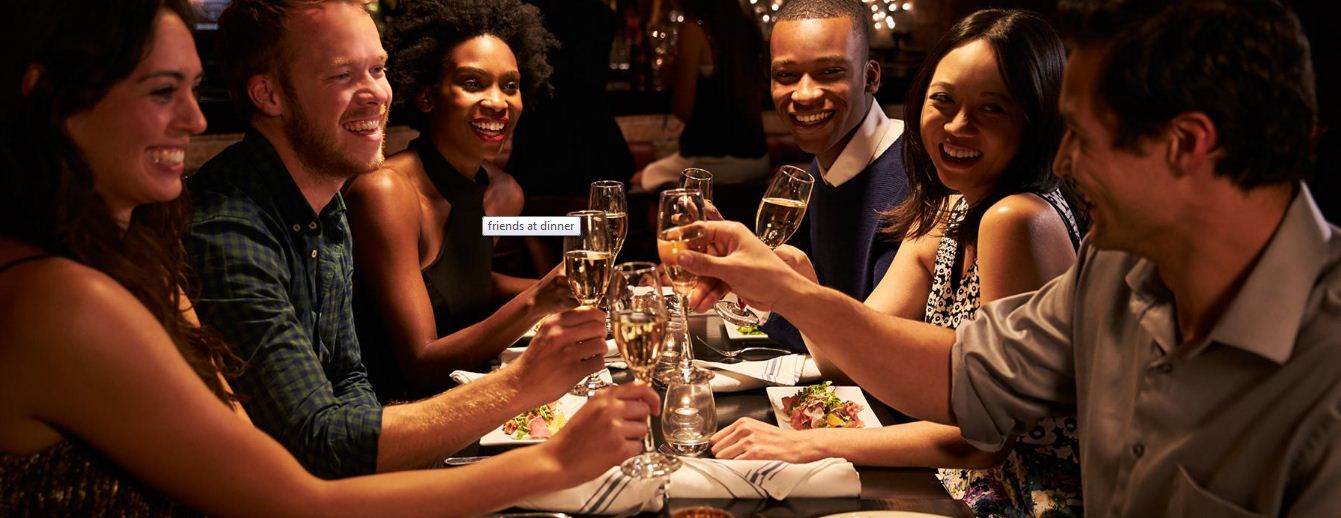




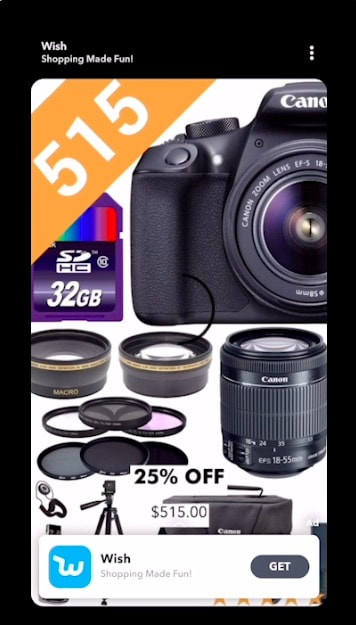
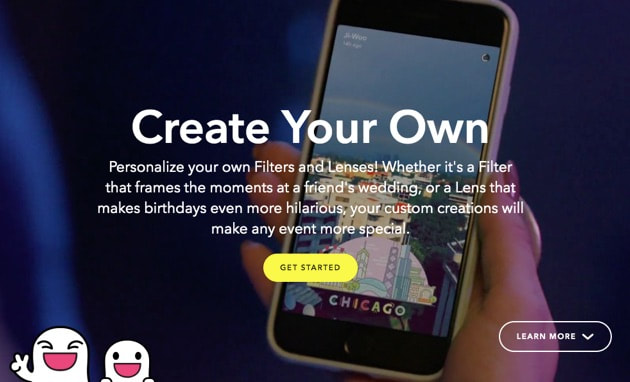
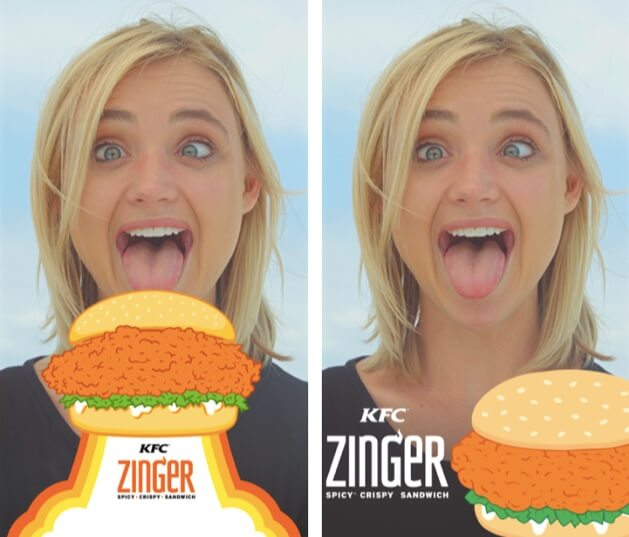
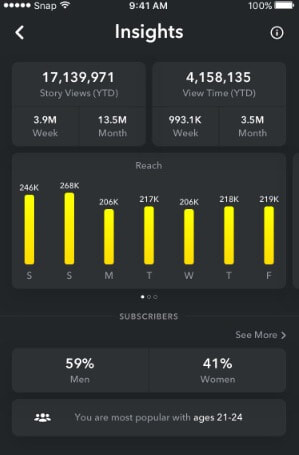



 RSS Feed
RSS Feed
